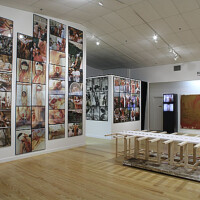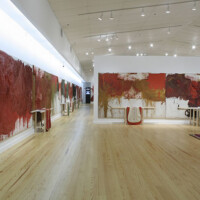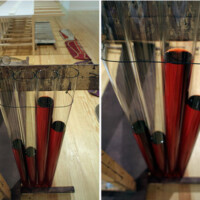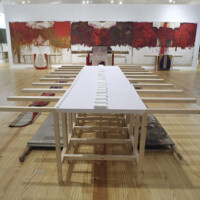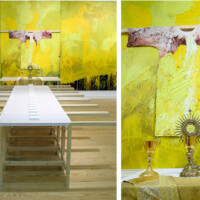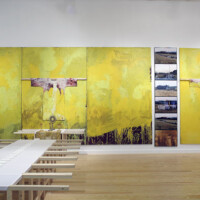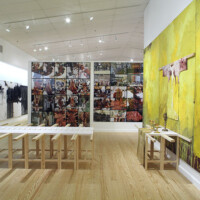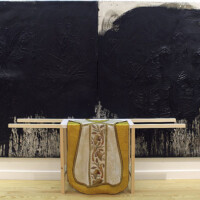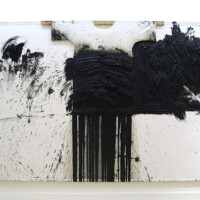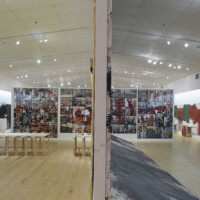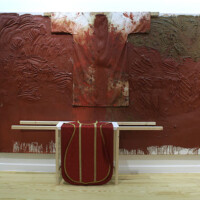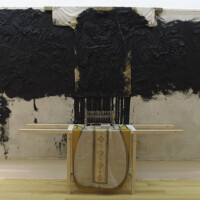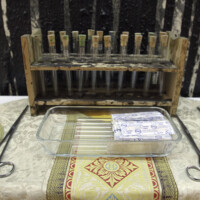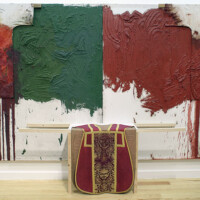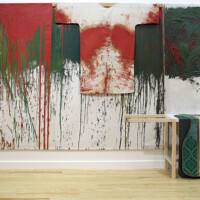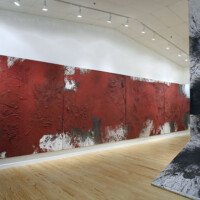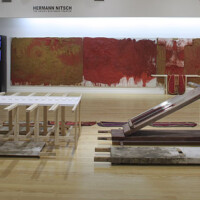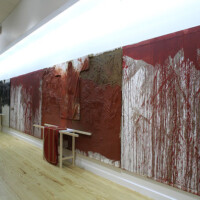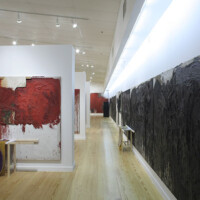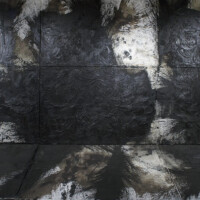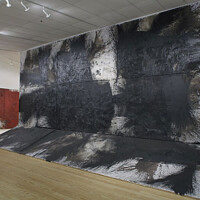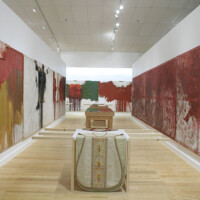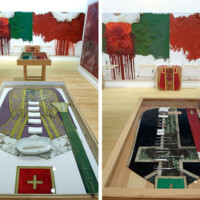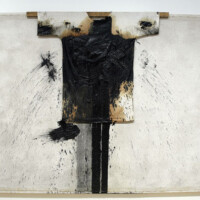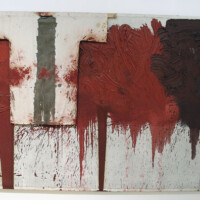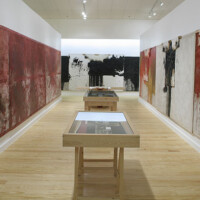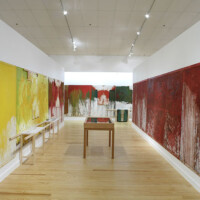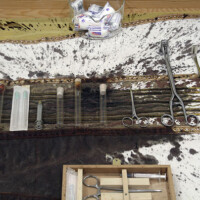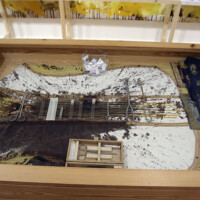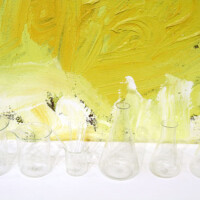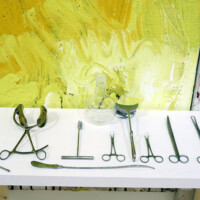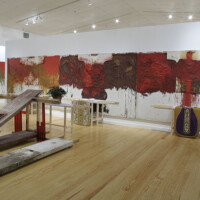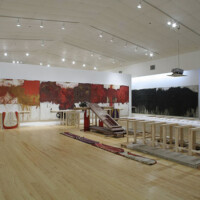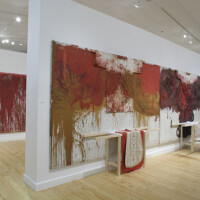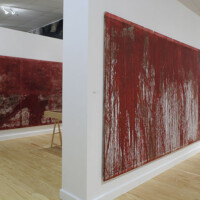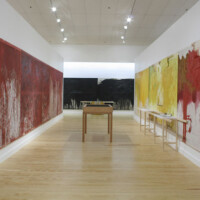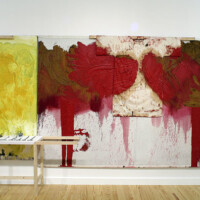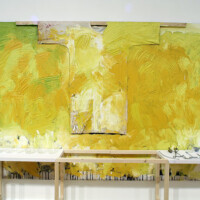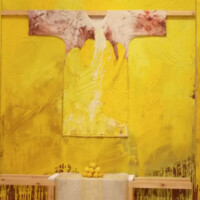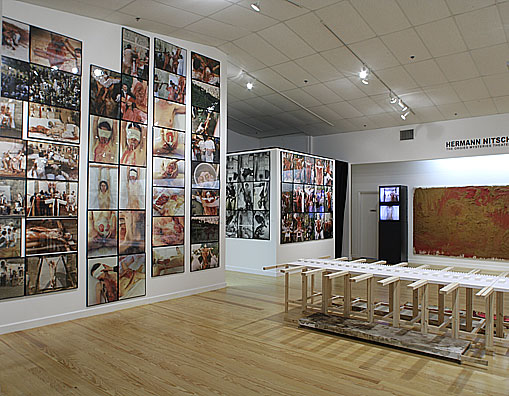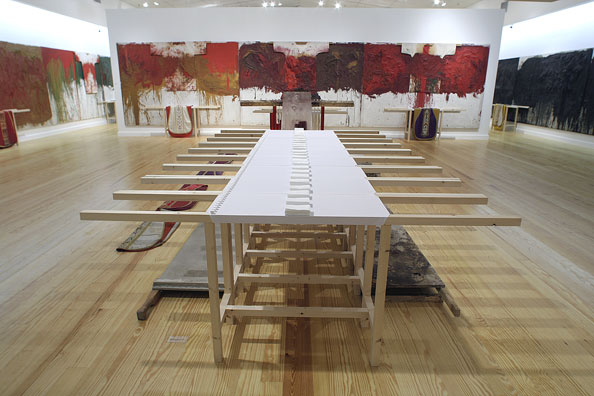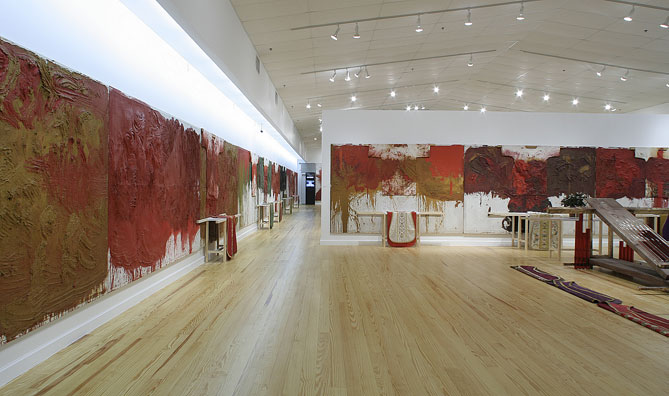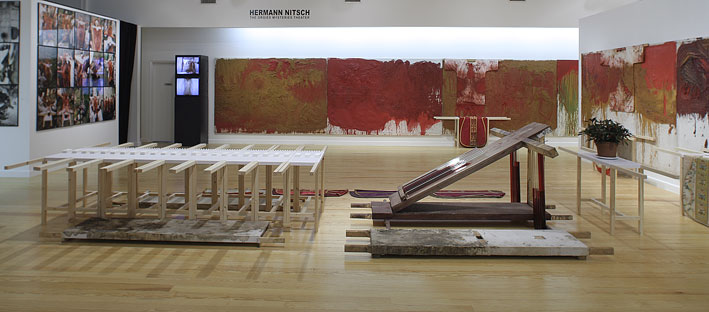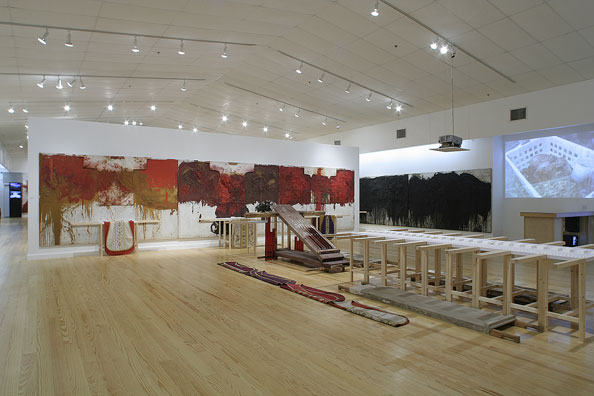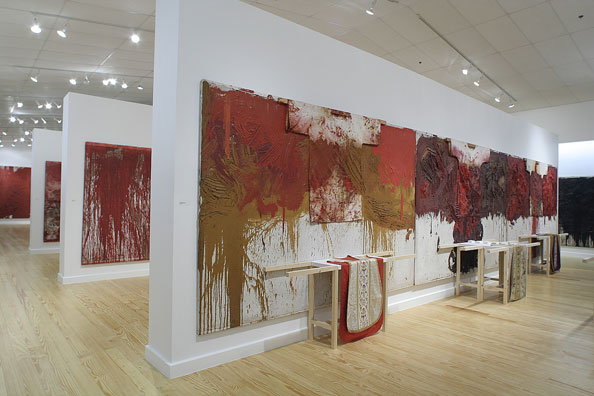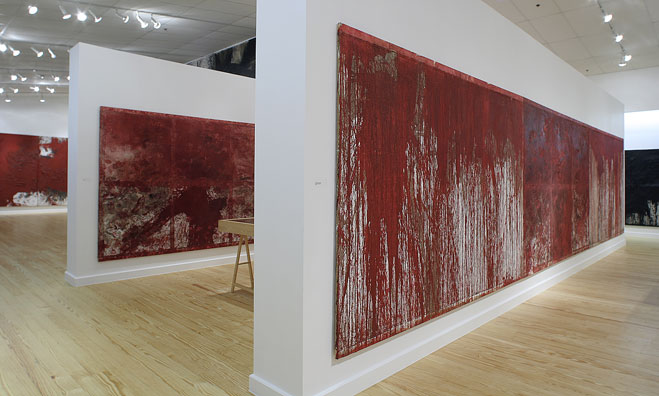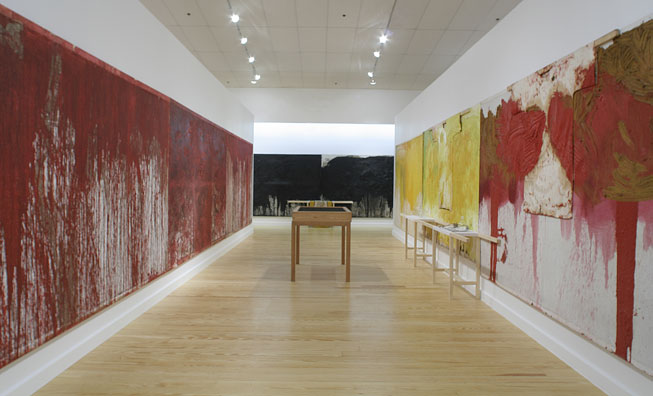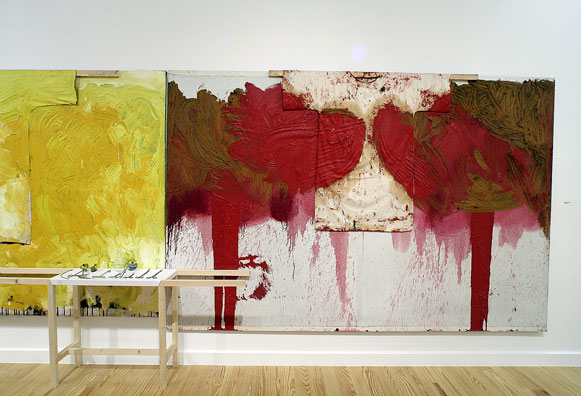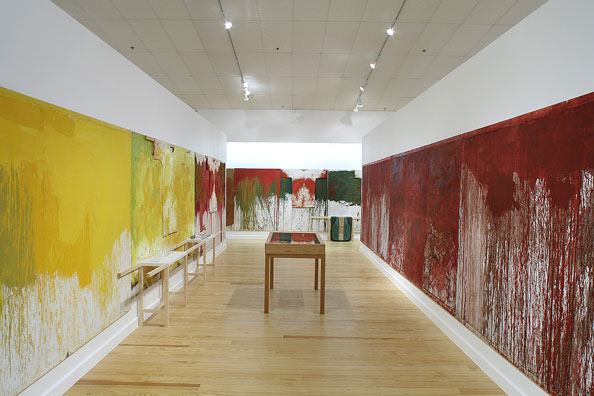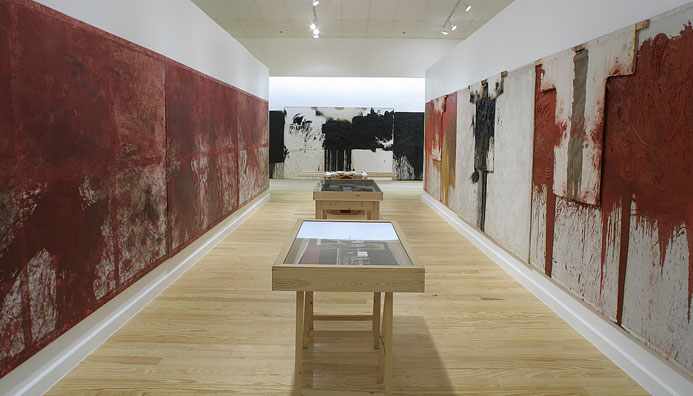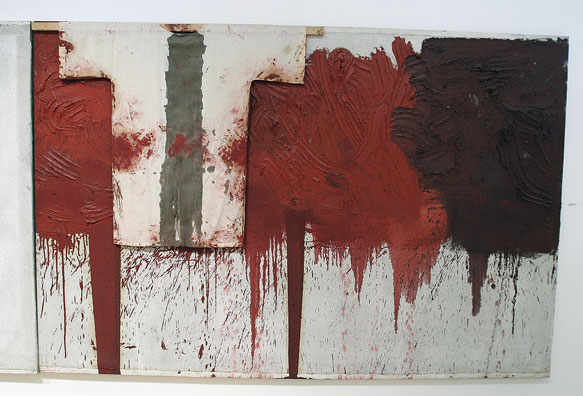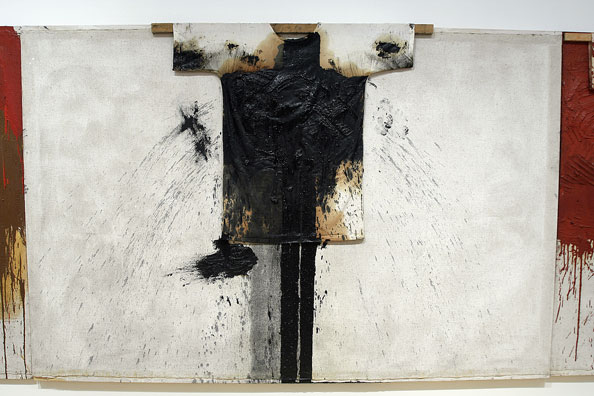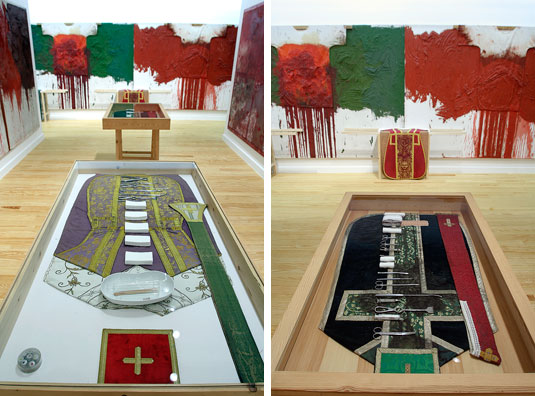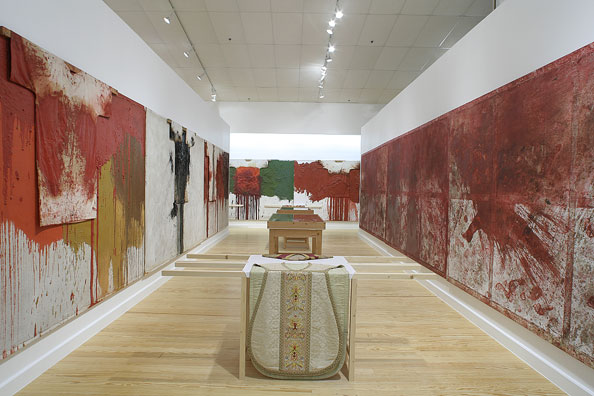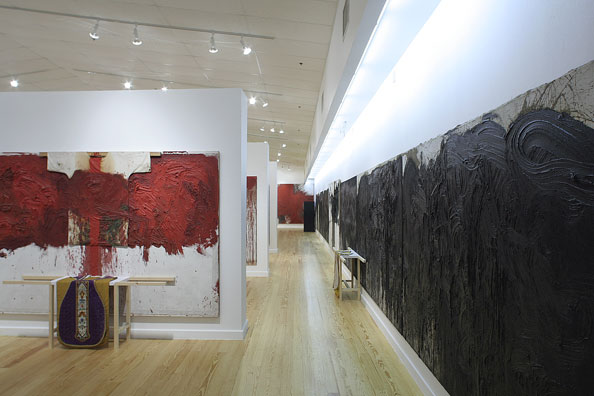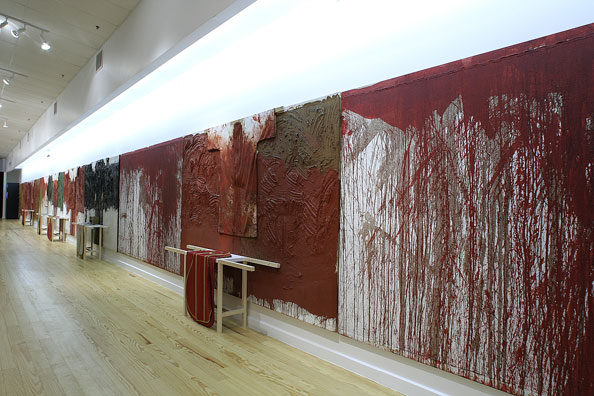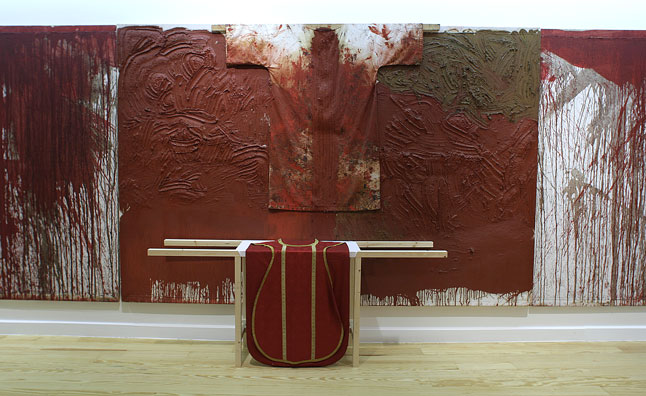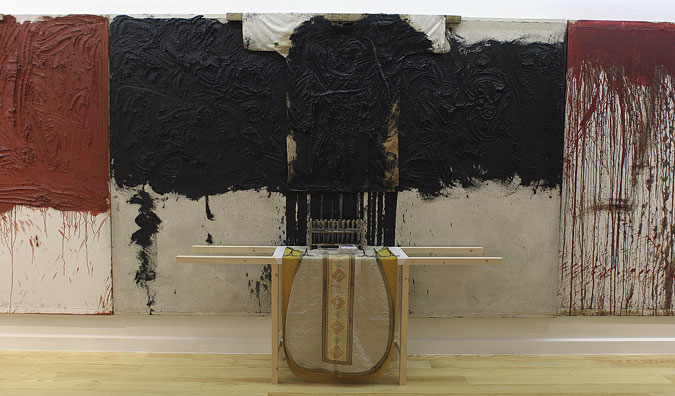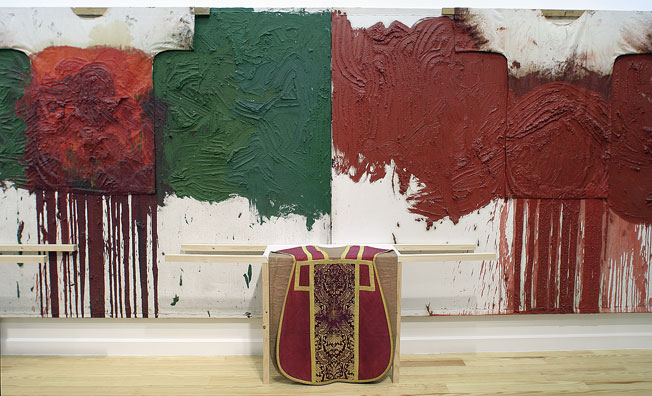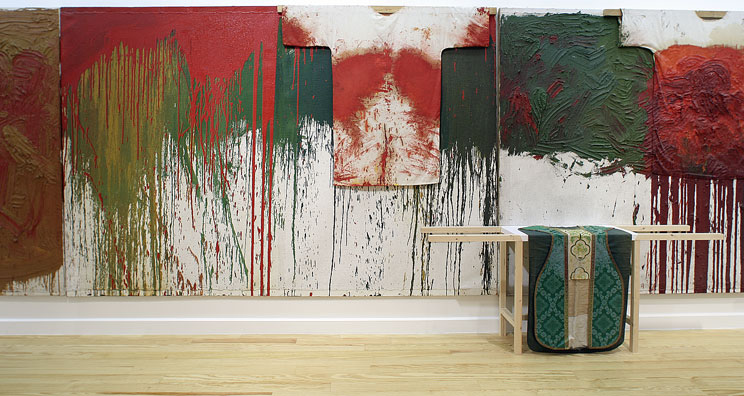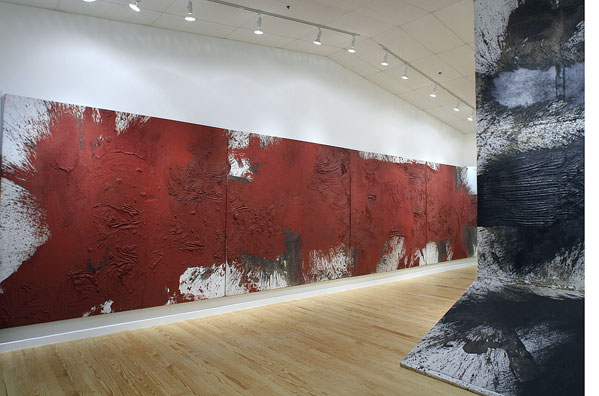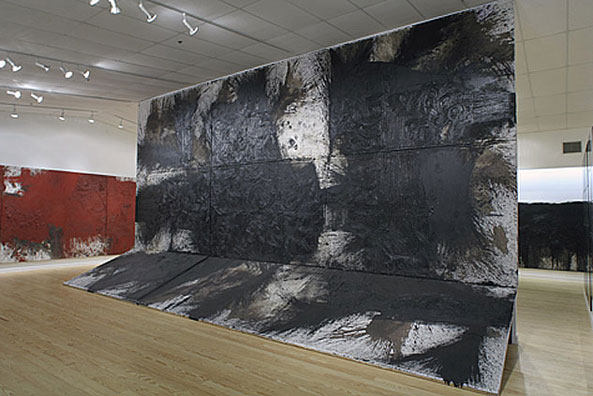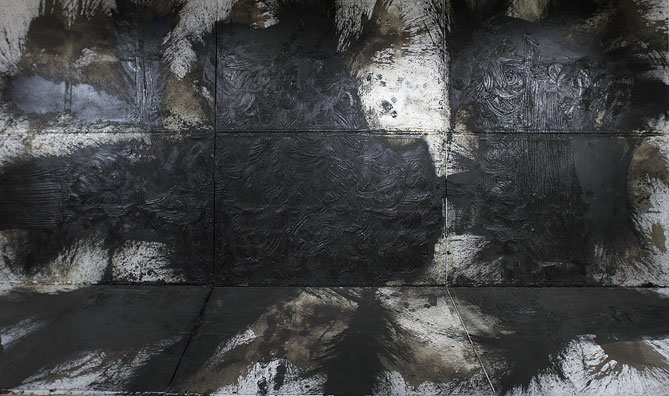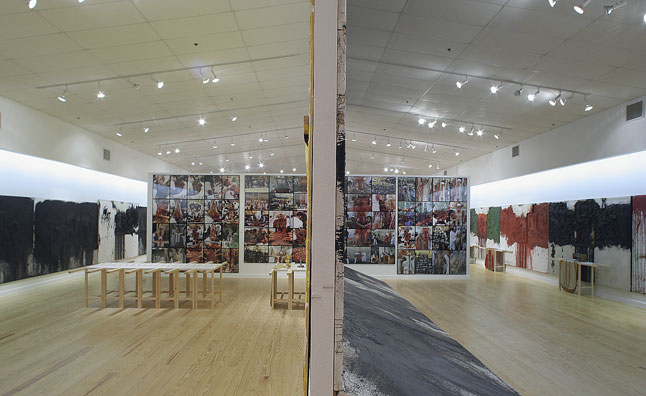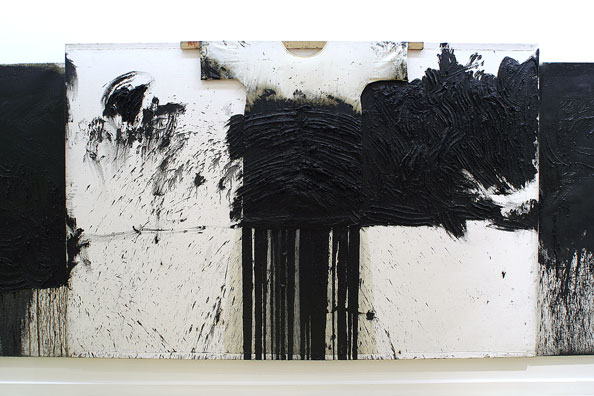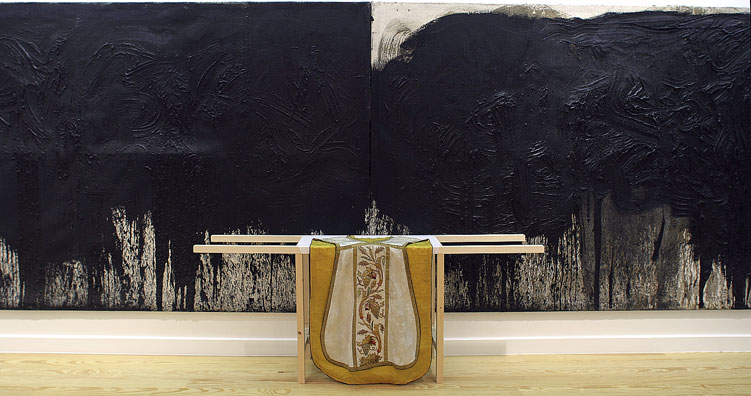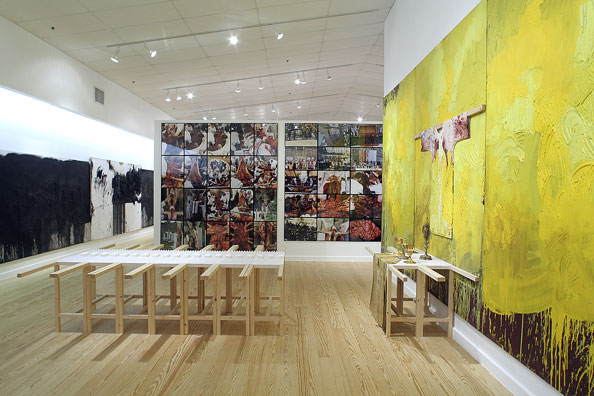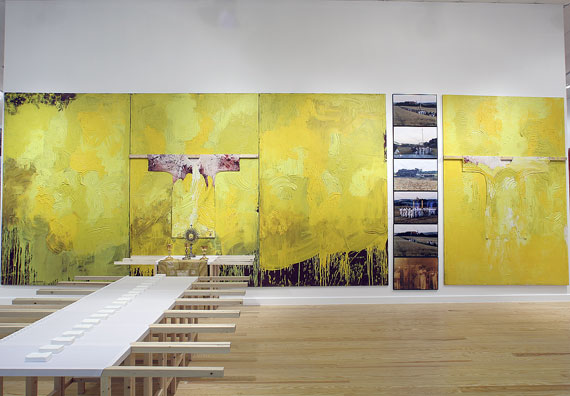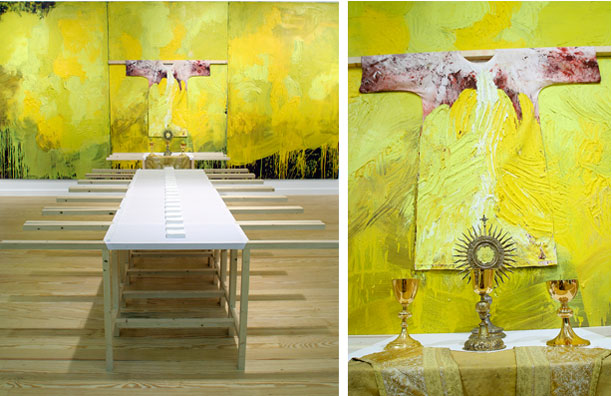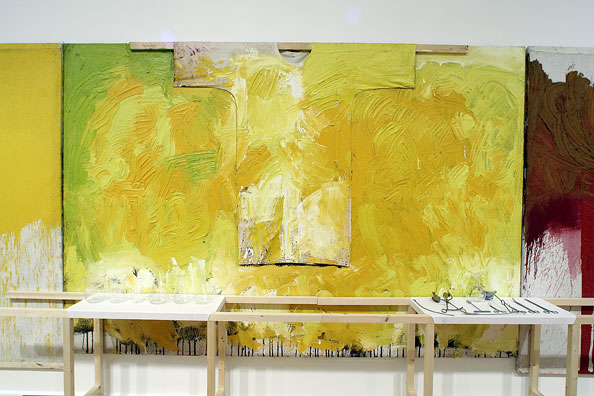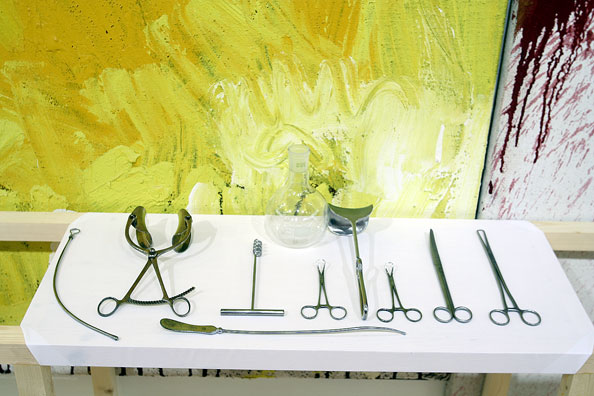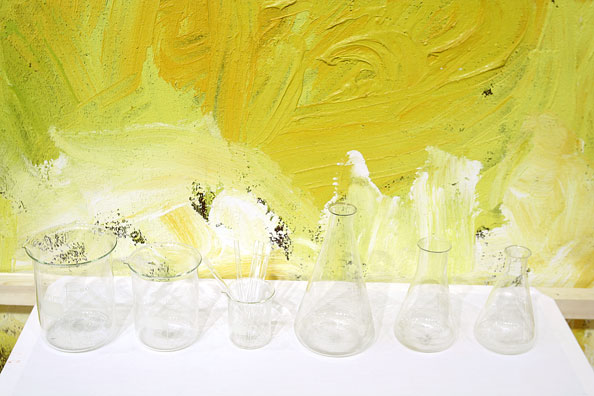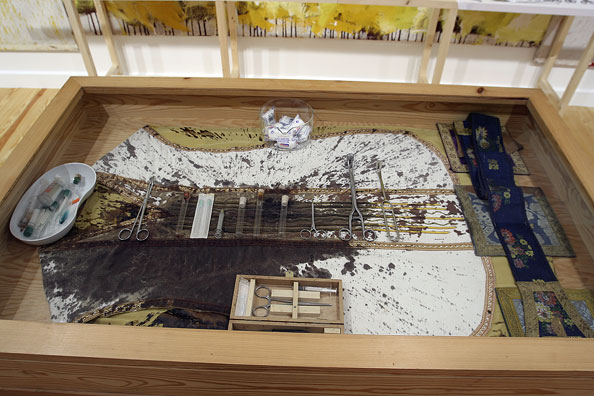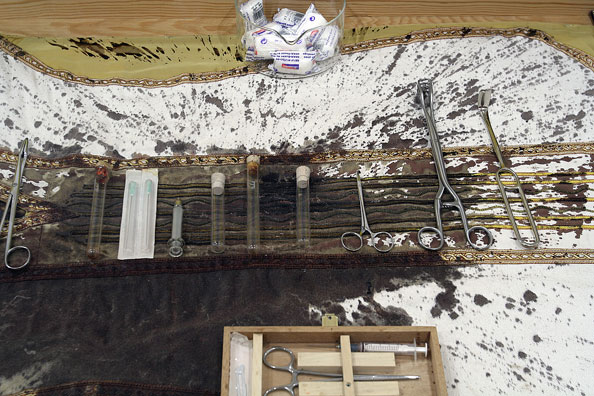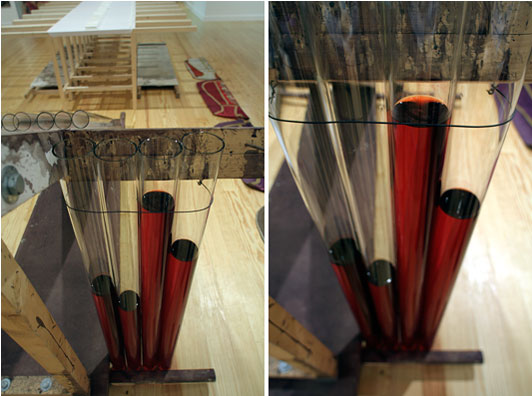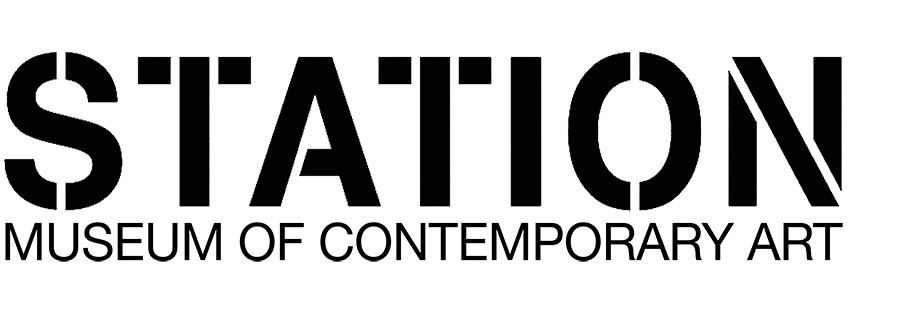Past Exhibition
APRIL 16, 2005 - JULY 2, 2005
HERMANN NITSCH: THE ORGIES MYSTERIES THEATER
Station Museum of Contemporary Art
Category
2005, Past Exhibitions
HERMANN NITSCH: THE ORGIES MYSTERIES THEATER
INTRODUCTION
BY JAMES HARITHAS
Hermann Nitsch may have stirred more controversy with his art than any artist of the last fifty years, but in times like these, characterized by perpetual war and human brutality, his cause and his art are righteous and highly pertinent. Nitsch’s art is a singular and courageous attempt to lay bare essential aspects of man’s spirituality, heretofore ignored or hidden, and to help him renew his commitment to the beauty and preciousness of life. This exhibition is the first major museum exhibition of his paintings and performances in the United States.
Austrian by birth, Nitsch is one of the most acclaimed European artists of his generation. He is a founding member of the internationally acclaimed Vienna-Actionists, a movement that decisively influenced Body Art and may have influenced a host of artists as diverse as Carolee Schneemann and Damien Hirst. His paintings have been collected by major museums in Europe, by The Metropolitan Museum of Art, The Museum of Modem Art, and the Guggenheim Collection in United States. Currently the Austrian Government is creating a Hermann Nitsch museum near his home in Prinzendorf, Austria.
In this exhibition, Nitsch’s Orgies Mysteries Theater, his paintings and music are plentifully represented. They are interrelated expressions of an indomitable talent in the service of an independent vision of the world. In the last forty years, Nitsch has taken his art far beyond the emphasis on decoration, style, and political correctness that characterizes the commercial aesthetic of much of contemporary Western art. Rather, he has focused on the potential for a religious communion with reality in a tragic world where most people are blind to life and live in pain until liberated by the force of artistic imagination.
Nitsch’s theater has antecedents that range from ancient bacchanals and tragedies to Oskar Kokoschka’s expressionist theater and Antonin Artaud’s theatre of cruelty. The artist’s melding of ritual, blood sacrifice, and drama is unique in that it revives religious emotions in an original way. Blood sacrifice is at the root of many religious rituals. It is common today in some form in most, if not all, religions, for example, Catholicism, Santeria, and Hinduism. Nitsch uses traditional Catholic symbolism freely – altars, crosses, religious vestments – yet not exclusively. These elements may embrace several meanings: as a Catholic symbol, the cross, a weapon, is linked to Christ’s crucifixion, and as a pagan symbol, it may represent the unity of heaven and earth. His theater is free form, that is, actors and audience interact freely, but the artist delineates its dramatic sequences and overall content. The wild and energetic actions of the actors express the violence and intensity of the life force. All five senses come into play in a complex ritualistic process characterized by an abundance of food, atonal symphonic music, animal sacrifice, liberal use of lamb’s blood and entrails, and a whole gamut of symbols of death and resurrection.
Actors and participants alike experience catharsis, self-renewal, and even joy by confronting death directly. Nitsch’s performances communicate his profound understanding of the complexity of life, including its joys, its cruelty and suffering as well as the underlying mythical and symbolic forces. Early in his career, Nitsch asked, “Why [do] I, of all persons, have to create an art which entails so much suffering, why [do] I need to descend to such depths, being a man that wants to embrace life?” The artist has faced daunting problems in presenting his work: imprisonment, isolation, abuse by critics and animal activists, but he has never compromised his vision. He loves animals and treats the animals to be sacrificed humanely in contrast to the brutality that takes place in countless slaughterhouses all over the world. Nitsch only uses animals that are already scheduled for slaughter, and they are eaten after the performance.
Nitsch’s paintings communicate his message with explosive intensity. Jackson Pollock, Willem de Kooning, and Georges Mathieu influenced him at the very beginning of his career. Their paintings introduced the young artist to a fundamentally emotional and expressive approach to painting based on intuitive gesture and openness to accident. Georg Lukacs, in his essay on Soren Kierkegaard in Soul and Form, defined gesture as “nothing more than a movement that expresses something unambiguous,” and regarding form, he went on to say, “the gesture is that unique leap by which the absolute is transformed, in life, into the possible.”1 In other words, the gesture links the artist’s inner feelings to the transcendent idea expressed in his finished work of art. Nitsch very quickly found his own style within this approach to painting.
The effect of Nitsch’s paintings is of tremendous immediacy, sensuousness, and power. I am reminded of Jiddu Krishnamurti’s statement that “beauty is fury.” With great intensity, Nitsch brushes, swabs, and sweeps his canvases with luminous and often monochromatic color. He utilizes mops, broom-like brushes as well as his hands and body movement to achieve a sense of acceleration. The paint runs in rivulets, drips, or splatters like blood spurting from a wound. In addition to the simple altars that stand in front of his paintings, he uses bloodstained canvases from rituals on which he affixes a shirt with its short sleeves outstretched like a cross. These are elements that connect his painting to his theater. Through his paintings, Nitsch demonstrates the innate connection between the erotic and the spiritual through the orgiastic intensity of his approach to painting.
Nitsch has composed four symphonies for full orchestra. His music is characterized by atonal passages of great beauty as well as chiming bells and white noise. His music also contains elements of sacred Tibetan ritual music and Gregorian chants. It is the ‘sound track’ for his ritual theater, but at the same time, his symphonies can stand alone. They represent yet another expression of Nitsch’s formidable talent. Nitsch belongs at the front the line of symphonic innovation in the tradition of such composers as Anton Bruckner, Gustav Mahler, Arnold Schoenberg, and John Cage.
Through his intensity and creative powers and by drawing inspiration from the great masters of various psychological, philosophical, scientific and artistic disciplines that formed the background of his own Austrian heritage, Nitsch has added a new chapter to the history of theater and abstract painting.
1 Georg Lukacs, Soul and Form


